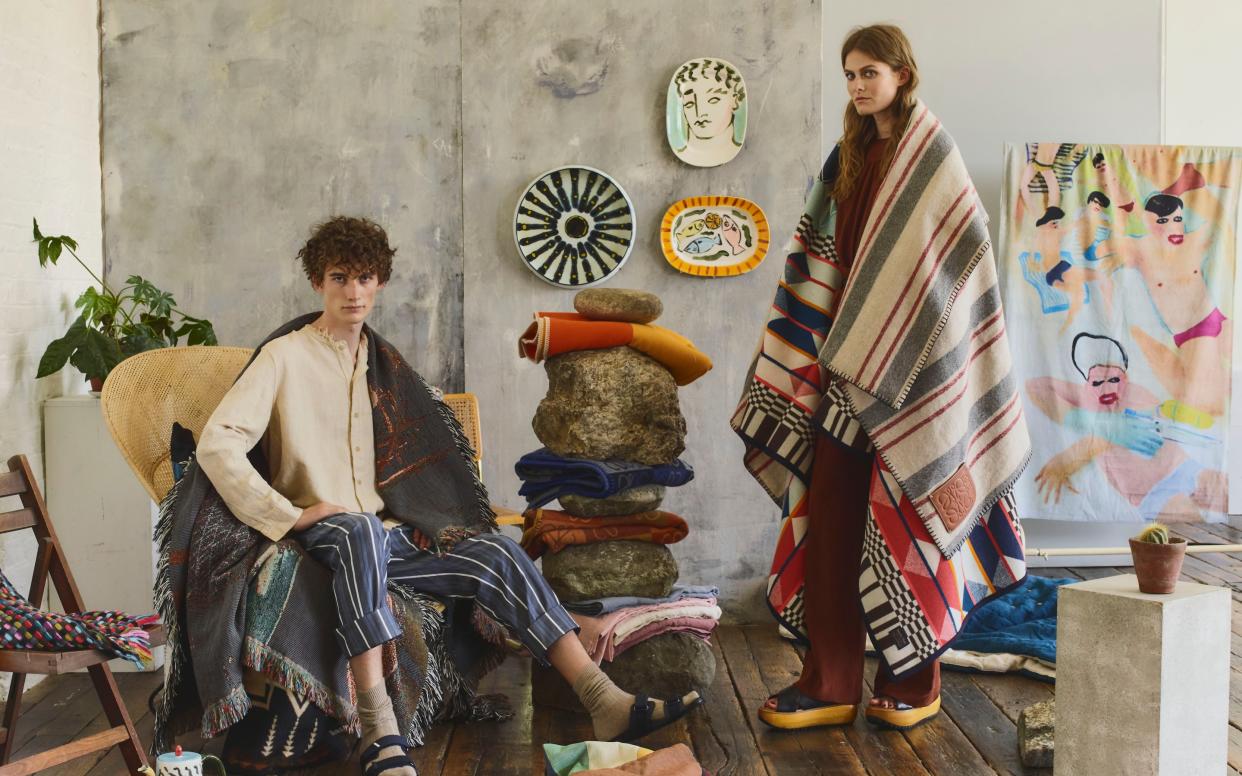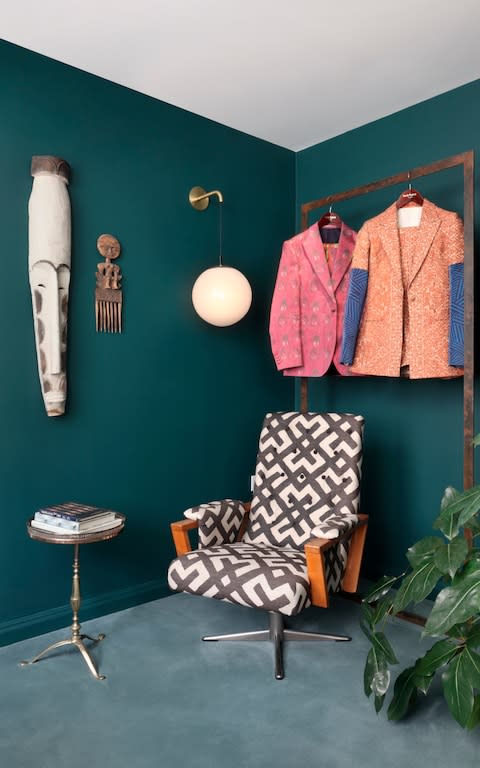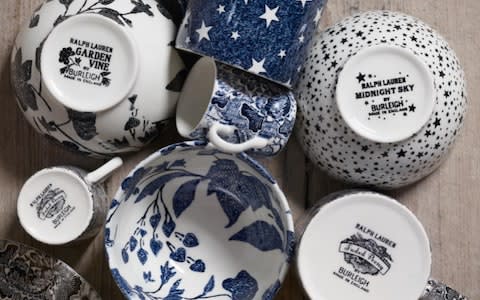Living the labels: why fashion designers are falling for interiors

The lines between fashion and interiors have long been blurred, but the past few years have seen a frenzy of cross-pollination.
For a designer or brand, a move into interiors is a logical progression; homewares tend to have more longevity than fashion, and also enable a label’s followers to live its aesthetic, whether through textiles and furniture or smaller pieces, such as tableware and decorative accessories.
The online store Matches Fashion tapped into this trend when it launched a home section last summer, which is expanding by the day, selling pieces such as Once Milano linens, velvet cushions by Christina Lundsteen and cashmere blankets by Saved NY.
April is homeware month at 5 Carlos Place, the company’s experiential store in Mayfair, where a series of free, interiors-focused events will take place.
In retail as a whole, stores themselves are changing, in part to give customers a reason to visit a physical shop in today’s click-to-buy world.
The fashion designer Charlie Casely-Hayford recently collaborated with his wife, interior designer Sophie Ashby, on his new store in London’s Chiltern Street, giving it the comfortable feel of a home, albeit a particularly stylish and impeccably curated one. In fact, much of the furniture and accessories (all of which are for sale) have come from their own private collection.
Chanel’s newest London boutique, at Brompton Cross, similarly has the feel of a town house, with sitting areas inspired by Coco Chanel’s Paris apartment.

Among the late Karl Lagerfeld’s final projects was a collection of ‘functional sculptures’, inspired by his work with the interior designer Aline Asmar d’Amman at Paris’s Hôtel de Crillon.
The limited-edition collection, which was launched in the autumn and is currently on show at the Carpenters Workshop Gallery in Mayfair, ranges from console tables and guéridons to fountains and mirrors, each carved from a piece of rare marble chosen personally by Lagerfeld.
Elsewhere, numerous big brands have been honing their homeware offerings for some time – Missoni’s chevron stripes have been adorning furnishings and fabrics for the past 35 years; and Fendi, Armani, Bottega Veneta and Hermès are similarly practised in producing beautifully tailored furniture and accessories to suit the elegant interiors one would expect of their well-heeled customers.
Louis Vuitton’s Objets Nomades project, which launched in 2012, has seen collaborations on limited-edition pieces inspired by the brand’s tailoring and leatherworking traditions, with designers such as India Mahdavi, Patricia Urquiola and Marcel Wanders.

Other collections have been more surprising, such as Dolce & Gabbana’s work with the kitchen brand Smeg, which has resulted in flamboyant, colourful prints inspired by the designers’ Italian heritage emblazoned on mixers, kettles, toasters and, most recently, ovens and fridges.
Gucci’s first foray into interiors, under creative director Alessandro Michele (who has revealed he almost quit fashion for interior design five years ago), also makes a maximalist statement.
Fans can now ‘Guccify’ their homes with signature tiger, eye, snake and floral motifs on small accessories, such as cushions and trays, as well as side tables, Chippendale-style dining chairs, folding screens and elaborately fringed armchairs in eye-popping colours.
Fabrics are, perhaps, the most logical way for fashion designers to branch out into interiors. Raf Simons’ range for the Danish company Kvadrat includes wool-blend upholstery fabrics, cushions and dip-dyed cashmere throws, and is now in its fifth year, with three new collections due to launch at this year’s Milan Furniture Fair.
London labels Mother of Pearl and Preen have both recently moved into textiles, with traditional-with-a-twist floral motifs on quilts and cushions in velvet and silk.
It works the other way, too, with fashion fabrics making their way on to furniture. At last month’s Stockholm Furniture Fair, bouclé was the on-trend upholstery fabric, giving curvy sofas and neat armchairs the look of a Chanel jacket.
Along more utilitarian (but no less chic) lines, denim has also made its way on to furniture: Danish company Carl Hansen has used the Welsh boutique denim brand Hiut to update its classic mid-century Safari chair, and Bernhardt Design has just launched a 30-piece collection with American denim company Raleigh.

Ceramics is another area where a fashion designer’s signature can be easily translated. Versace has a long-running tableware line with porcelain manufacturer Rosenthal; Dior produces plates with delicate toile de Jouy patterns, and Bella Freud, whose logos have successfully migrated from jumpers on to cushions and candles, has just worked with artist Gillian Wearing on a suffragette-inspired tea set.
Most recently, Ralph Lauren Home has employed the expertise of the British pottery company Burleigh on a tableware collection, which marries the pottery’s 250-year-old printing techniques with the fashion label’s modern American design language.
These smaller pieces, much like perfume and cosmetics, give far more people the chance to own a piece of their favourite label. And with the homeware market on the rise, the love affair between fashion and interiors looks set to bear ever more tempting fruit.
Sign up for the Telegraph Luxury newsletter for your weekly dose of exquisite taste and expert opinion.

